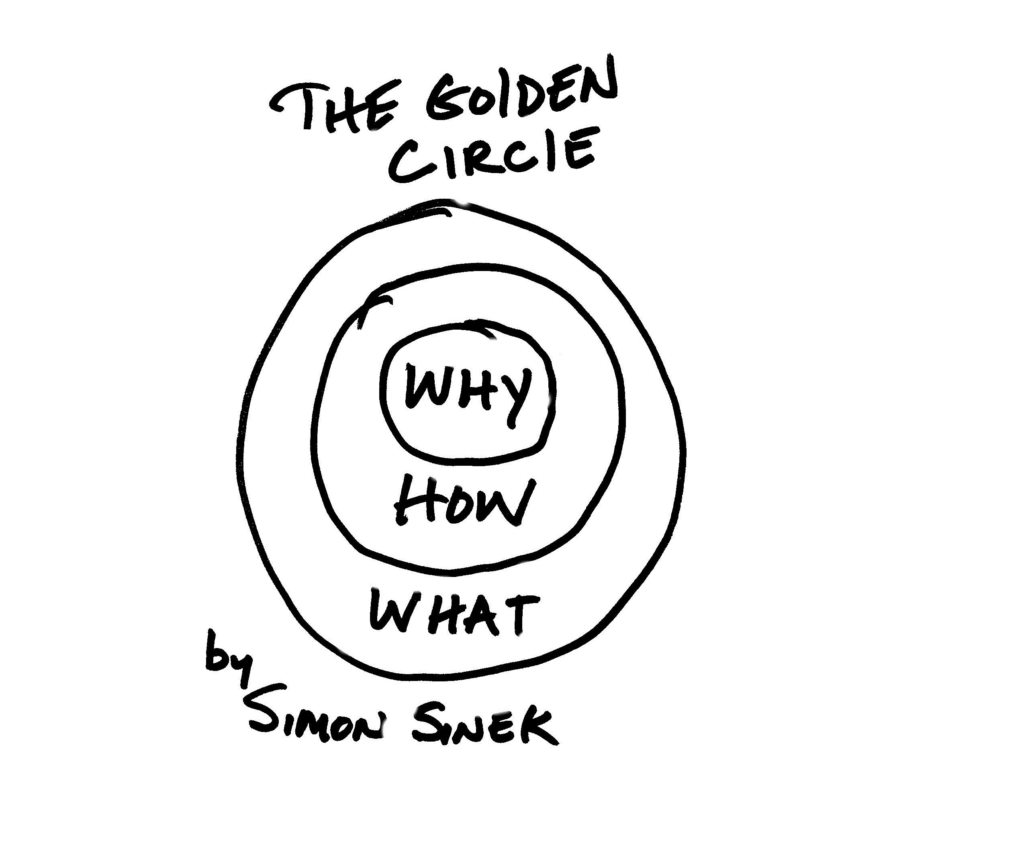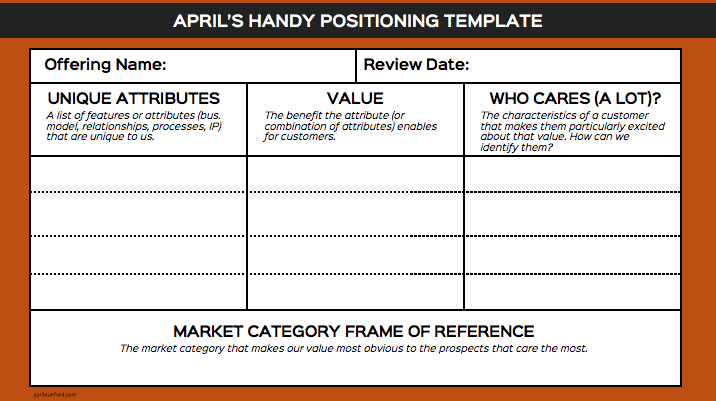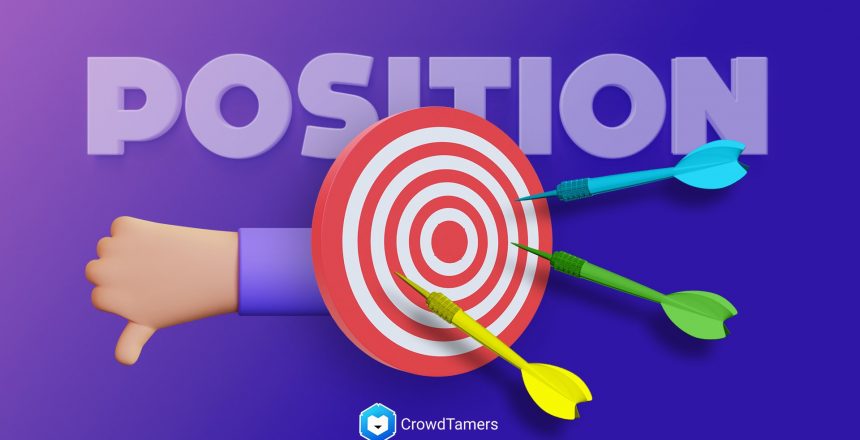
Almost everyone I talk to has positioned their business incorrectly.
This sounds crazy, right? What are you doing in business, if you don’t have a unique position to your company?
In the last 6 months I’ve gone on deep dives with more than 30 companies, talking about their market positioning, what makes their brand special, how they sell to clients, and what their path for growth is and…almost everyone fumbles at it.
They admit their website isn’t great. The most recent sales deck doesn’t quite get the point across. The new video doesn’t quite send the right message. Everyone admits that if they can talk to clients long enough, they can close a deal, but most leads just don’t seem to get it.
So I’d bet that’s true for you, too. Odds are you, right now, are trying to bring in new business without really knowing how best to present your services and skills, and losing a lot of money in the process.
How do we get there?
It’s a common exercise that any marketer fresh out of biz school can lead you through. How can it be that nearly everyone gets it wrong?
How we get it wrong
The standard model for positioning looks like this:

Here’s the thing: like a game of Go, this looks like something so easy to do it only takes a minute to learn how to use.
But it takes a lifetime to master.
Getting it wrong, step 1: Think of surface details only
And what I’ve found is people tend to answer these questions very shallowly, when an exercise like this really is only useful if you think deeply. Let’s explain by example.
For athletes, Nike shoes are an athletic footwear which provide comfort, support, and protection, unlike Adidas, which provides less comfort, support, and protection.
That doesn’t really do a very good job of it, does it?
For aspirational thinkers, Nike is a brand that embodies their dreams of activity and youth, which provides symbols and reminders of quality and determination, unlike Lululemon which provides body positive athleisure style.
I dunno how accurate the second statement is, but there’s a lot more thought about what is wrapped up into the brand and the product than in the first.
It’s still really hard to use that positioning statement well, and I avoid it.
Getting it wrong, step 2: Think of it as a marketing problem
Brand positioning is a marketing problem only in that it is a business problem and marketing might see the impacts of poor positioning.
Positioning impacts the entire company, from your top of funnel marketing to customer retention. From recruiting to quality assurance, and from ops to I.T., your positioning is the story of why you’re in business and why you matter.
Marketing can’t solve this, any more than Sales can fix your product line assembly problems.
Simon Sinek talks about the Golden Circle of how to be a great organization:

The whole company hinges on the “why”, the position that your organization takes, and treating that as a departmental problem is something that dooms the effort to solve it at all.
Getting it wrong, step 3: Ignoring your customers
There’s a classic way to see if your business is positioning itself correctly: how much of your sales teams’ time is spent explaining to customers what your business really does? Like, after you actually get someone on the phone, how many of them understand why they should choose you over the competition?
3 different clients I am working with right now had the exact same discussion with me last week: we have good traffic numbers, our ads perform well, but once they get to sales all of the leads just aren’t quite right. They’re too cheap. Or they’re shady. Or they always end up choosing a competitor.
If people are interested right up until they’re actually confronted with buying your product, there are two possibilities: you have a bad product, or you aren’t telling people why they should want what you have to offer.
So if we assume that your product isn’t an actual bad product that you’re misrepresenting on purpose, that leaves the fact that you’re telling your customers the wrong stuff about you.
And they’ll tell you that, when you talk to them.
If you listen.
If they don’t understand how you’re different than your competitor, that’s one problem. But if they keep classifying you with someone who isn’t really a competitor at all, then either you or your customer is fundamentally not understanding what your company is about. You spend dozens (or hundreds, or thousands?) of dollars finding potential customers and endless hours of labor and care to convince them to talk to you and buy what you’re selling. So if they don’t understand your product well enough to even figure out who the alternatives to you are, the problem with your customers isn’t them.
The problem is you.
So listen to what your customer has to say to you, so you can understand what you should be telling them instead.
How to get Positioning Right in 3 Easy Steps
I specialize in growth content marketing, but in order to do it well, the basics for a client’s positioning need to be solid. As I’ve already mentioned, very few of the 30+ companies I’ve talked to in the last 6 months have this figured out.
Over the last decade, I’ve developed a process that works pretty well for me to define and test brand positioning ideas.
Getting it right Step 1: Asking the right questions
April Dunford wrote the literal book on positioning. It’s brilliant. You should read it, if you have any interest in the topic. In that book, she explains how she explores positiong:

This is pretty complex, if you ask me. I’ve run through this with a few clients and personally find that it’s not all that easy to use. It asks good questions, but not, I think, enough. I end up having to ask a lot of follow up questions to probe deeply enough to get good answers.
Over the years, I’ve come to a set of 6 questions that I ask any client when I’m trying to refine their position. If you ever studied journalism, they should look familiar to you:
- Why are you in business? (note that this question will get asked a few times, taking inspiration from the Five Whys)
- What makes your business special?
- Who do you sell to?
- Where do you find customers?
- When can your business beat the competition?
- How does what you’re building make the world better?
Ask the right question of the senior team at your brand or company. Be relentless digging until you get answers that are deeper than the surface. Find out root causes, and be sure to document what you learn.
When you have the answers to this, I find it equips you well now to fill out either the first exercise at the very top of this post, or fill out April’s Handy Positioning Template. And use that to figure out how to talk about what you’re doing to your leads.
Getting it right, Step 2: Revisit it & test your idea
I can’t tell you how often I hear it: “Well, we need to update the messaging again but we just completed an overhaul of the website 3 months ago. We finished our site, so we will just have to live with it.
A website shouldn’t be considered a static asset like a book or a printed poster; it’s your front door to your shop, and you should do whatever it takes it make it interesting and keep it fresh.
When you have new positioning, you should of course update your website with it, but you should also measure how it performs and think about how you could iterate and improve on your positioning.
And then?
Then you test it.
Your first idea for branding & positioning may well not be the right one, despite your best efforts. So when you roll it out, listen to your new visitors, and make sure that your positioning leads them to buy what you want to sell.
Getting it right, Step 3: Spread the word
Once you’ve gotten your new brand positioning tested and working to bring leads who understand your value, make sure that your whole organization knows what you’ve found. Answering hard questions like, no, really why are you in business is tricky, and once you’ve gone through that pain to understand the real why, it’s important that you get the information shared as broadly as you can.
Positioning works best when the whole company is aligned to it. If everyone can hammer on a key value proposition together wherever the lead or client is in their journey with you.
It’s not enough to spread the word once, “Hey, everyone, here’s our new positioning.” You’ll need to repeat that positioning enough to make it key to the product, the team, and the company itself.
It’s easy to get positioning wrong and hard to get it right, so it’s no wonder most companies are trying to sell to an audience that doesn’t quite fit what their ideal persona should look like. But there’s a reason that all of the best organizations have such clear position: it’s the difference between a business and a brand.



